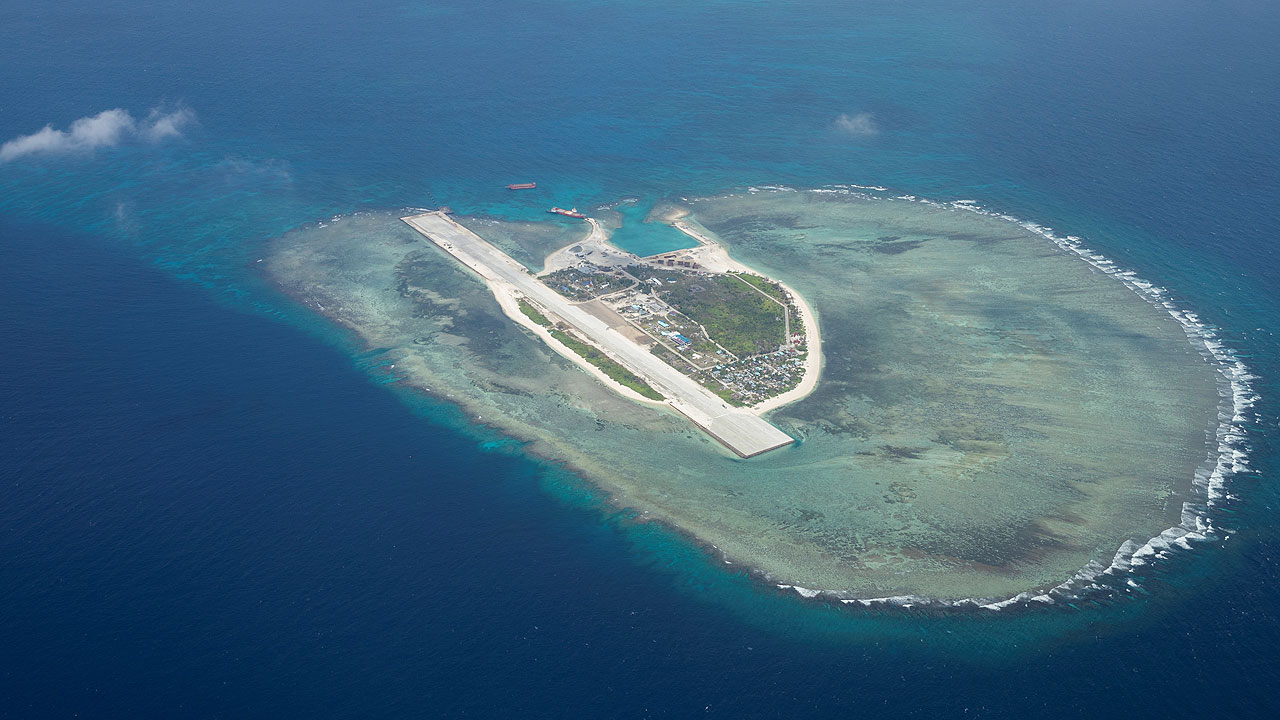US-Philippine civic mission to Thitu sought amid rising China tensions

By Kyle Aristophere T. Atienza, Reporter
FILIPINO and American troops should conduct civic missions at the Philippine-occupied Thitu Island in the South China Sea, according to a US think tank, after an Aug. 5 water cannon incident that stoked long-running diplomatic tensions over China’s expansive claims in the waterway.
While a civic mission involving American troops “would hardly seem like an audacious step,” ending Washington’s “no-boots-on-the-ground” policy in the South China Sea could be a signal that the US won’t shy away from its commitments to its treaty obligations, Raymond M. Powell, the South China Sea lead at Standford University’s Gordian Knot Center for National Security Innovation, said in an analysis piece posted on the SeaLight website on Aug. 28.
Mr. Powell said the US has been “far too slow” to adapt its South China Sea policy to the new reality, having kept its distance from the occupied features in the waterway to avoid conflict.
Unfortunately, China interpreted the reticence as a weakness and exploited the status quo, while America’s treaty ally, the Philippines, “bore the brunt of China’s gray-zone expansionism.”
While Washington’s ambiguous posture toward South China Sea claims may have made a lot of sense in 1990, “an increasingly expansionist Chinese regime has repeatedly and audaciously exploited this weakness in the US stance to its own gain,” Mr. Powell said.
He cited China’s increasingly “aggressive and hostile” military and paramilitary threats that have upended the status quo.
The Chinese Embassy in Manila did not immediately reply to a Viber message seeking comment.
The US journey toward backing its treaty ally’s posture within its exclusive economic zone in the South China Sea could start with sending US and Philippine military doctors and engineers to Thitu Island, he said.
Thitu Island, which the Philippines calls Pag-asa, is the largest of the nine features occupied by the Philippines in the Spratly Islands, locally known as the Kalayaan Island Group.
Pag-asa is home to almost 200 Filipinos, more than four decades since the Philippines established a municipality in Kalayaan in 1978.
“I have no doubt that even this modest step will meet with shrill accusations from Beijing that the US is provoking China by challenging its ‘indisputable sovereignty over the South China Sea islands,’” Mr. Powell said.
The move could also prompt protests from Vietnam and Taiwan, both of which have their own overlapping claims, he added.
But a possible negative reaction from Vietnam and Taiwan could be handled with “quiet and proactive” diplomacy since both countries “will recognize that their own core interests are not really threatened by closer US-Philippine integration.”
“In fact, they will more likely (secretly) appreciate moves that complicate their chief rival’s strategic South China Sea calculus,” Mr. Powell said.
“The expected People’s Republic of China outrage, on the other hand, should be greeted with heart-warming pictures of the US and Philippine military medical outreach and civil engineering projects, as well as more solemn reminders of America’s treaty commitment to Philippine security,” he said.
The joint civic mission gives meaning and consent to the collective deterrence fostered by allies against incessant Chinese misbehaviors, Chester B. Cabalza, founder of Manila-based International Development and Security Cooperation, said in a Facebook Messenger chat.
“The proposed US-Filipino joint civic mission to Pag-asa Island reaffirms the strong security ties of the two allied countries,” he said. “It gives a more credible posture on the crusade of the Philippines to save its territories and maritime features from intruders and the expansionist Chinese regime.”
Mr. Cabalza said many Filipinos have long waited for the US to challenge China “in our own backyard.”
The Philippines is the US’ oldest ally in the Indo-Pacific region. The two countries became treaty allies in 1951, when they signed a mutual defense treaty that compels both nations to protect each other in case of an attack by a third party.
Tensions between the Philippines and China in the South China Sea have worsened after the Chinese Coast Guard fired water cannons to block Manila’s resupply mission at Second Thomas Shoal on Aug. 5.
The US was among the countries that immediately issued statements of concern after the incident.
The government of President Ferdinand R. Marcos, Jr. has given the US access to four more military bases under their 2014 Enhanced Defense Cooperation Agreement. It also plans to hold sea patrols with the US, Japan and Australia.



